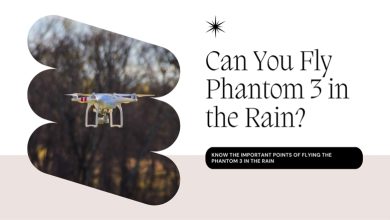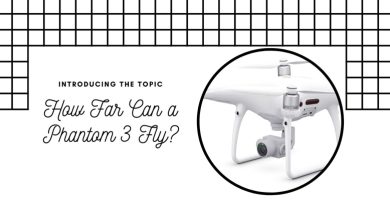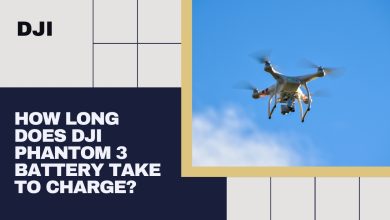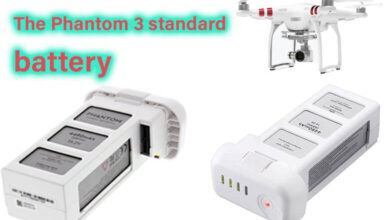The Phantom 3 Standard controller
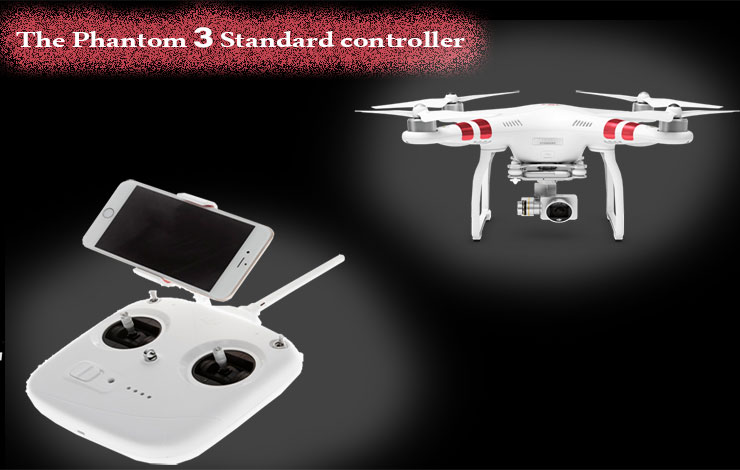
The Phantom 3 standard, one of DJI’s third-generation drones, has a particularly unique reputation in the world market for its unrivaled growth and achievement.
Four different models of these drones were created and released to the market, and because of the range of models, the users can choose their desired model based on its features and functionality.
As we discussed in detail in previous articles, this technology consists of various components that serve a specific purpose and must operate correctly for the device to work correctly.
The controller is one of the device’s main components, allowing the user to efficiently govern and use the machine.
Because of the importance of this section in this article, we intend to review the Phantom 3 Standard controller switches, connect DJI phantom 3 Standard to the controller to the device, phantom 3 Standard controller battery, and joint problems with it. We invite you to join us if you are a user of this device.
Introducing the Phantom 3 Standard controller
As all of us know, each electrical gadget requires a controller or remote control to operate.
Because drones are electronic devices, they need a remote controller, which is certainly not the case with this new tech, which uses a controller to guide the drone.
This Phantom 3 standard controller that called radio control too, and it has six 2.4 GHz channels. This controller works at a regularity of 5.8 GHz, known as the frequency range.
It’s worth noting that this controller is Wi-Fi capable and can be linked to the device. This feature of Phantom three is highly ergonomic, comfortable, and pleasurable to use.
The most important feature of these drones is their portability and lightweight. These new technology features include a convenient, light, and pleasant remote control, satisfying the device.
Certainly, piloting this drone with an inappropriate and heavy controller can be challenging and cause problems for the user.
However, a highly qualified controller with an appropriate and comfortable design is guaranteed about this controller.
In this technology, a remote holder is installed on the remote controller for comfortability in using. Phones up to 6 inches can be used, and the user can easily see the monitor.
The design of this component is so that the users can adjust it to the angles they desire or require. The DJI Phantom 3 standard controller switches are in two types, also referred to as sticks. Join us now to continue discussing the benefits of this remote.
How far can the bird take some distance with the remote controller?
The fascinating aspect of the controller is that it can easily take a certain distance by flying with remote control.
The operation is the same in Phantom 3 standard drones, and with the device controller, it can fly up to 500 meters and distance itself from the controller. It should be mentioned that if this distance is exceeded, the link between the two is severed.
When this happens, the Fail-Safe mode occurs, and the bird returns to where it took off and landed.
At this point, the most crucial consideration is the amount of phantom 3 standard controller battery, which should be sufficient to return to the end of origin.
The benefits of the DJI Phantom 3 standard controller
One of the most significant aspects of the advancement of technology is the manufacturer’s attempt to incorporate in the new design features that are more advanced than the previous version to entice customers to purchase the product.
Since we talk about the Phantom 3 Standard produced by the DJI company, one of the critical aspects added to this technology and can be claimed to be a perfect and practical opportunity is the wireless connection of the Phantom 3 standard controller.
As previously stated, this technology’s controller or radio control is effortless and joins to the mobile phone via Wi-Fi, allowing the user to use it easily.
This characteristic can be considered a significant opportunity for the drones in this series. Technological advancement was not present in previous versions but has been added to the new series, the Phantom 3 standard.
It’s worth noting that the mobile phone was placed in the device in the last series, and a cable was used to link, causing flying limitations.
One of the options available in this model is that the user can only control the bird using his cellphone.
In this case, the user should install an application known as DJI GO on their mobile phone. It can easily record video capture images and implement any necessary settings.
One more benefit of DJI-made control systems is that they work by the FCC and CE standards. As a result, the user’s location is automatically determined first wherever they turn on the device. The configurations are set to the CE or FCC protocol based on the laws of that country.
DJI Phantom 3 standard controller switches
This controller has two switches to control the device—these switches, also known as a joystick, operate very smoothly. As a result, the drone can be handled effectively and without difficulty with these switches.
These switches can be located on mode 2, standard, and reserved for flying. In addition, custom mode 1 is accessible and can be used. You can adjust the power of the device’s motor (throttle) and handle the quantity of deviation from the bird path or yaw with the switch located on the left side of the controller.
Switch to the right side of the controller to adjust the amount of rotation for the bird to peak and rotate (pitch & roll).
A connector switch is designed on the top and right sides of the remote control. You can change the device’s flight mode and select between GPS and Attitude
with this button.
The other key is situated at the top of the remote and selected IOC modes on the left. The controller switches operate more precisely, the better and safer the flight.
Use the DJI Phantom 3 standard controller handbook or directions in the manual for more data on buttons and other control parts.
Phantom 3 standard controller battery
The controller is remote, and it must be charged before it can be used, so the quality and variety of batteries used are critical. The battery used in the Phantom three standard remote is a Lipo with a potential of 2600 mAh.
When the Phantom 3 standard controller battery is fully charged, it can be used for an extended period and is ready to fly for nearly an entire day.
This controller includes LED lights that are used to demonstrate the condition of the controller battery and assist the user in having reliable information about the controller power usage and understanding when the remote should be to the charger—being linked.
It should be mentioned that the controller charger is identical to the Phantom 3 Standard battery charger.
As a result, it is recommended not to charge the controller and the device simultaneously to make the best use of the charger and maximize its efficiency.
How to connect DJI phantom 3 standard to controller?
Often it happens that the drone controller will fail, and the phantom 3 standard controller won’t turn on, so a new controller will be required to replace it.

The new tech controller has nothing to do with the remote control or the drone at first and must be modified if it is to function.
For this purpose, the controller should be connected to the device, also known as introducing the controller to the device.
To begin:
- First, install the DJI GO app on your smartphone.
- Second, navigate the Remote Controller Setting section and select the Linking Remote Controller option.
After reconnecting the controller to the device and completing these steps entirely and correctly, you can use it.
Why is the Phantom 3 standard controller not charging?
One of the other issues that users of this device face, and one of the most frequent, is the phantom 3 standard controller not charging.
This issue manifests itself in two ways:
- When the controller is linked to the charger, the LED lights associated with the charge turn on but then turn off in less than a minute.
- The battery depletes rapidly when the remote is turned on in the second mode. The alarm associated with the end of the battery charge is sounded until the battery is completely drained.
When these issues arise, the only option is to visit the nearest reputable repair center and, if necessary, DJI phantom 3 standard controller battery replacement.
Why won’t the phantom 3 standard controller turn on?
Another issue that can take place when using drones is that the phantom 3 standard controller won’t turn on.
The end of the controller charge is the first thing that comes to mind. If the device turns on when attached to the charger, that’s great, but if it doesn’t, the following solutions should be considered:
- It is possible that the phantom 3 standard controller won’t turn on after updating the device’s hardware. It would help if you simultaneously pressed the C1, C2, and shutter buttons and reset the controller. This may activate the controller.
- Suppose this method does not work and the controller does not turn on. In that case, some other solution is to press the C1 and C2 buttons simultaneously, as well as the recording and camera settings buttons, and turn them on while holding these four buttons simultaneously—remote controller action.
If these methods do not solve the device’s problem, the only option is to take it to an authorized repair shop for inspection.
The last words,
The Phantom 3 Standard controller, as mentioned in the article, is one of the device’s basic features and allows the user to use the device easily.
This prompted us to examine all the features mentioned during the article and their issues and offer ways to solve problems.
We hope that all of the issues discussed in this article have provided you with enough information about the Phantom 3 standard and that you can use these solutions to solve any problems with your device and enjoy using it.
Finally, we emphasize that if the issue with the device is not resolved with the results offered, be sure to contact authorized repair shops and ask for assistance.

